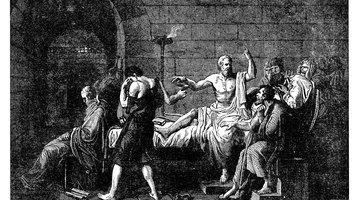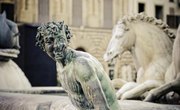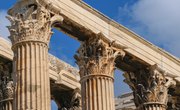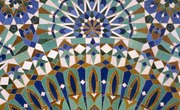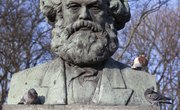Romanticism is a form of literature, art and philosophy, first introduced in the late 18th century, that stresses the emotional and subjective side of human nature. Writings, artwork and architecture are elaborate and colorful, evoking deep feelings. Modernism is a philosophical response to romanticism and focuses on the roles science and technology play in society. The industrial revolution and the machine age contributed to the development of modern thinking. Modernists defy traditional norms, replacing them with humanistic values.
Underlying Philosophies
Romanticism and modernism are firmly opposed to reason and logic, values that governed society in the 1600s and early 1700s. However, romanticists focus on the natural world, and modernists focus on ways machinery, weapons and technology affect society, often to its detriment. For example, English romantic poet William Wordsworth discusses the human connection to nature and its powerful ability to evoke deep emotions. Modernist American poet T.S. Elliot discusses the negative effects of war, industrialization and urban life, but believes man's intelligence and ingenuity are sources of enlightenment.
Religion and the Supernatural
Romanticists are fascinated by the natural world, so their masterpieces reflect an underlying belief in the supernatural. Many credit a supreme being, such as God, for creating the universe and establishing humanity. However, they also believe the natural world presents hardships such as storms that lead to fatal ship wrecks and sicknesses that end in death. Modernists don't put much trust in religion or the supernatural and stress the consciousness and willpower humans can choose to possess or deny.
Artistic Strategies
Modernists appreciate creativity but often use scientific and technical processes to design their artwork or architecture. For example, modern architect Frank Lloyd Wright used geometric shapes, metallic materials and synthetic materials to create his abstract masterpieces. He also incorporated organic materials, such as natural stone, into his work. Modernistic artwork and architecture has an art deco appeal. Romantic architecture is more exotic and ornate. Artists and architects use arches, sculptures, decorative woodwork, flying buttresses and angled roof lines to add visual interest to their creations. Romantic architecture has a Gothic appeal.
Hero Types
The two philosophies differ on their views of humankind. Romanticists praise the common man despite his failures and shortcomings, believing that raw human characteristics are basically good. Romantic heroes are often outcasts, but they prove their loyalty and bravery by serving the greater good. Modernists are more skeptical of humankind and often question people's motives, integrity and values. Characters in modern literature are antiheroes who often struggle to make something of themselves. For example, Arthur Miller's modernistic play, "Death of a Salesman," portrays man as disillusioned, frustrated and overwhelmed by societal expectations.
Related Articles
References
Writer Bio
As curriculum developer and educator, Kristine Tucker has enjoyed the plethora of English assignments she's read (and graded!) over the years. Her experiences as vice-president of an energy consulting firm have given her the opportunity to explore business writing and HR. Tucker has a BA and holds Ohio teaching credentials.

